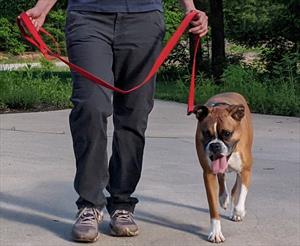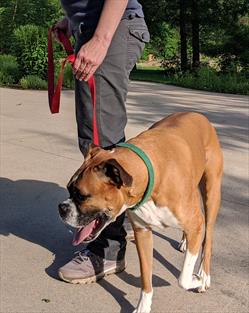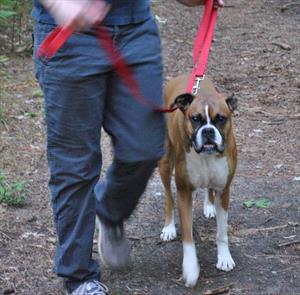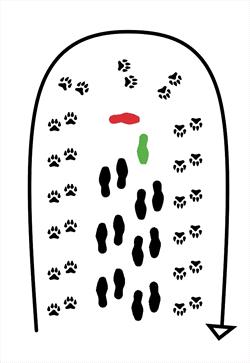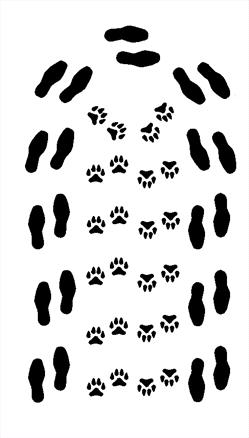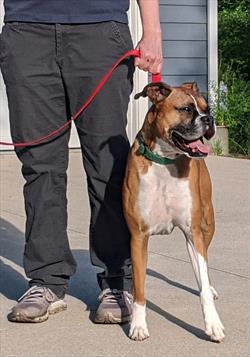As we adjust to new COVID-19 procedures in our hospital I find I am moving dogs around the hospital more than ever. Clients watch as we walk their dogs from curb-side check in, through the hospital to our treatment area and then back out to the car.
When walking a dog through the hospital we use different techniques than when training a dog to walk on a loose leash. Clear communication is key to a quick, hassle-free walk from the parking lot to the hospital. Clear guidance increases the dog’s confidence as well as increases the dog’s ability to cooperate. A few techniques to improve leash walking when moving patients:
Holding the leash
- Hold the leash with your thumbs facing up. Be careful not to tightly wrap the leash around your hand.
- Keep the leash loose between your hands as well as the portion connected to the patient.
- Keep the hand closest to the patient near your hip.
Pace:
- Aim for a pace of 125–135 steps per minute (a brisk walk pace). This provides the dog with clear direction.
- Increase your speed outdoors or when the dog is distracted and wants to wander or sniff something. The increase in speed helps the dog focus on keeping up.
Turns:
- It is important to turn in a way that the dog knows where you are going. Have in mind the turn you hope to execute as you approach the turn and give fluid, concise signals to the dog.
- Signals to turn could include gentle pressure on the leash and making a sound (click of the tongue or “let’s go”) to gain the dog’s attention.
- When walking, move your feet at an even pace. When turning, keep your feet moving in place.
- Depending on the situation and the personality and emotional state of the dog, either do a T-turn or a U-turn.
T-turns:
- In a T-turn, the dog is going to walk on the outside of the turn.
- This is best for patients who tend to walk ahead of you.
- Think of the mantra: left, right, left, right, T (with the left foot), T (with the right foot), left, right, left, right
U-turns:
- In a U-turn, the dog is going to walk on the inside of the turn.
- This is best for dogs who tend to lag behind a little.
- Think of walking up one line, then back along a parallel line.
Stop Signal:
- Slide the hand closest to the dog down the leash toward the dog as you stop your forward movement. Lean your bodyweight back as you come to a stop.
- Avoid leaning forward or raising your leash hand up when stopping.
The best way to practice leash techniques is to practice with a human partner with your partner keeping their eyes closed. The partner can give feedback on the clarity of your guidance.
If you are Low Stress Handling Silver Certified, remember that as a past student you can sign in to Low Stress University for a refresher on walking techniques by viewing the workshop Canine Lab 1: Essential Exercises for Moving Dogs from Place to Place.


